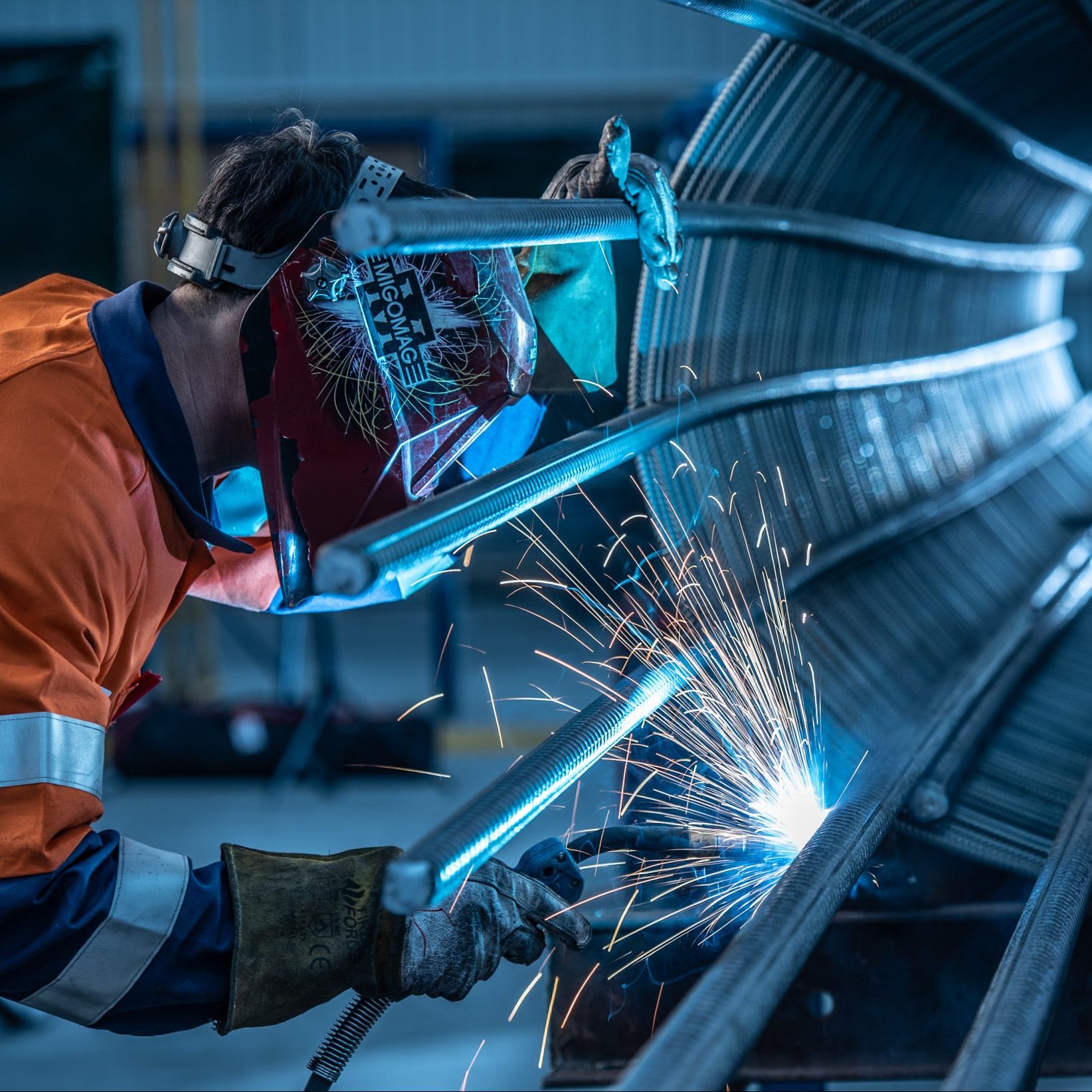The use of rebar and steel in construction has always been essential, particularly in complex builds, to provide strength to the structure.
However there’s a new product in market that, although not right for every complex build, provides a new, more environmentally friendly option in our increasingly decarbonising world.
Glass Fibre Reinforced Polymer (GFRP).
What is GFRP?
Glass Fibre Reinforced Polymer is a composite substance made up of plastic and thin glass fibres.
It is about a quarter the weight of steel, can be manufactured more easily and more cost effectively, making it more sustainable in terms of production than steel reinforcement.
It’s also not subject to corrosion, so its durable, which also increases the longevity of structures it is used in.
And while there were some question marks on how well it can be used in complex builds, there are now many working examples of GFRP being used in infrastructure across a wide range of industries, from aeronautics to energy and transportation.
“GFRP is one of those fascinating materials where there has been something of a wait and see with it, and some doubt if it could hold up in different use cases. What we are seeing now is it being used in increasingly more diverse and complex builds, meaning after a decade of ‘trial’ it is really now coming into its own”, says Alan Jeffreys, Founder and CTO of ADDA
“GFRP has a lot to offer in terms of benefits, from being lighter, to being able to be more easily broken down and recycled at the end of life. And given every industry is looking for a sustainability edge, we think this will be a strong selling point for the product.”
Keeping it in the workflow
From a reinforcement detailing perspective, using GFRP is simple.
“There’s no major change in the approach that we would take to create the requisite models for GFRP as compared to rebar, apart from adjusting the models to account for the weight differences,” says Jeffreys.
“So it slots easily into the construction process and workflow.”
“Just as for rebar, Detailers can use our ADDA Construct platform can create the required 2D and 3D models which deliver the same clarity around the build requirements, and provide accuracy around project costs and savings before the build begins.”
“We simply adjust the weight ratios to reflect the use of GFRP, and then run the modeling as we would for a rebar-led project. So the model created is fit for purpose and takes into account the GFRP.”
“If you then take that into the 4D and 5D area with tools like ADDA Insight, the lighter weight, material costs and sequence of events will all be taken into account in terms of time and cost estimations.”
The future
Jeffreys says he expects the use of GFRP to become more widespread as more construction companies see it being used and the evidence of its benefits.
“Rebar is always going to be a strong contender in terms of preferred materials when it comes to complex builds, but having a new and proven material to work with that provides better weight outcomes, durability and environmental impacts, is a game-changer, particularly as the industry looks to innovate around ESG considerations.
“When you add this together with the efficiencies and insights you get on projects through the use of 3D, 4D and 5D modeling, there is an opportunity here to really shift the sustainability profile of the whole industry.”
Find out more how ADDA can help you further with GFRP and your next project.



